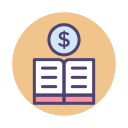Protect Your Plan: Emergency Fund and Insurance
Start with a $1,000 starter cushion to handle immediate surprises, then grow toward three to six months of essential expenses. Keep the fund in a high‑yield savings account for accessibility and safety.
Protect Your Plan: Emergency Fund and Insurance
Review health, renters or homeowners, auto, disability, and term life coverage. Raise deductibles strategically to lower premiums, but never below your emergency fund capacity. Share one adjustment you plan to make.



